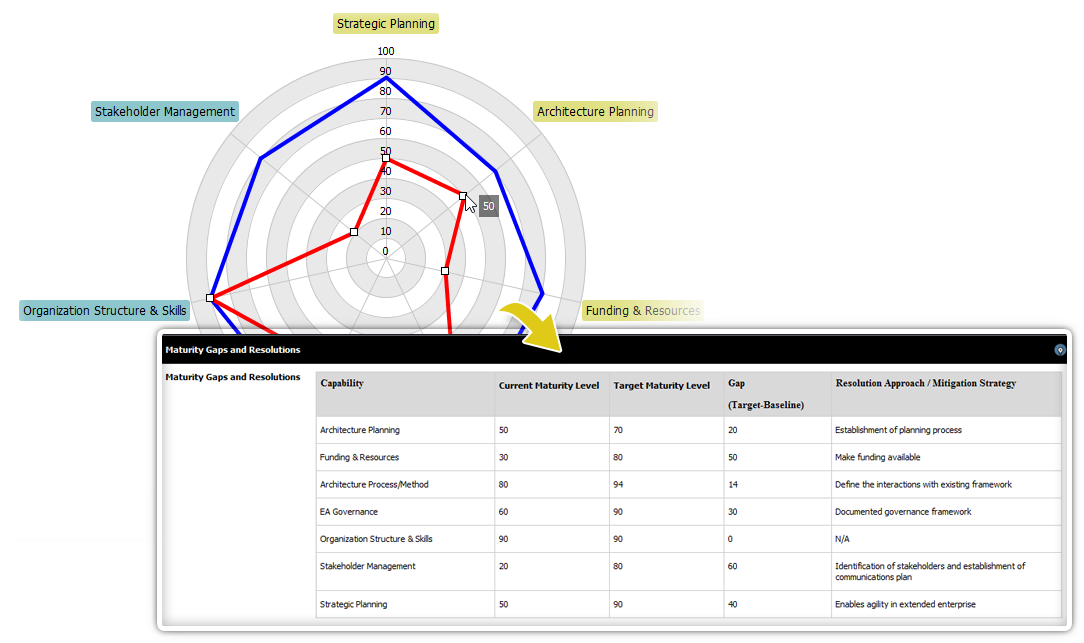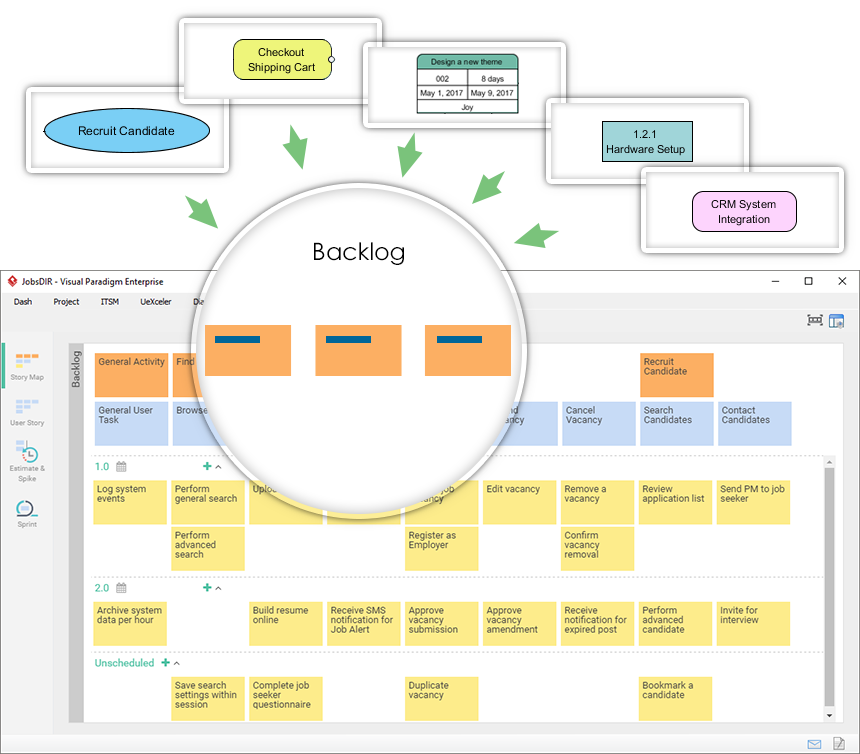In the past, people felt quite contented with a drawing tool for visual modelling, as "a picture worth a thousand of words". They didn't really care a shape such as class they created in one diagram will be possibly reused in other diagrams. They didn't care whether a change of class property in one diagram will be taken effect in the other diagrams.
A real modelling tool should not only be able to model a particular problem as a pictorial representation, but also allows to derive findings or summarize some model properties from one form in a diagram to other forms in some other diagrams. Sounds a bit abstract and theoretical, right? Let's go through this concept by several example:
Example 1: Maturity Analysis

- Maturity analysis with factors and stages
- Auto transcribe factors in tabulated format
- Auto calculate gaps between stages
- Generate table with action or resolution to be taken column for remarks about actions and remedial works needed.
Example 2: 'Send to Backlog' (Scrum)

Multiple sources of "user features" derived from different diagrams in different forms could be sent to the story map backlog.
- From Use Case Diagram
- From As-is and to-be BPMN Business Process Diagram
- From PERT Task
- From work packages in a Work Breakdown Structure (WBS)
- From ArchiMate® work packages of a architecture roadmap diagram
- Etc. (Any other visual model)
Use Cases of these model transformations in Visual Paradigm:
- Between work items in the guide-through and JIT process
- Apply Model Baggage to transform model properties from one diagram to others


